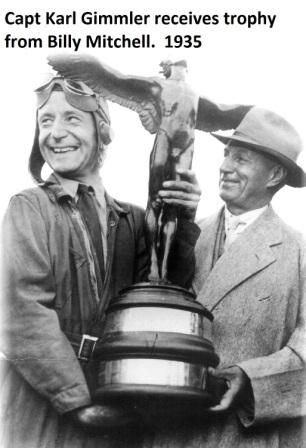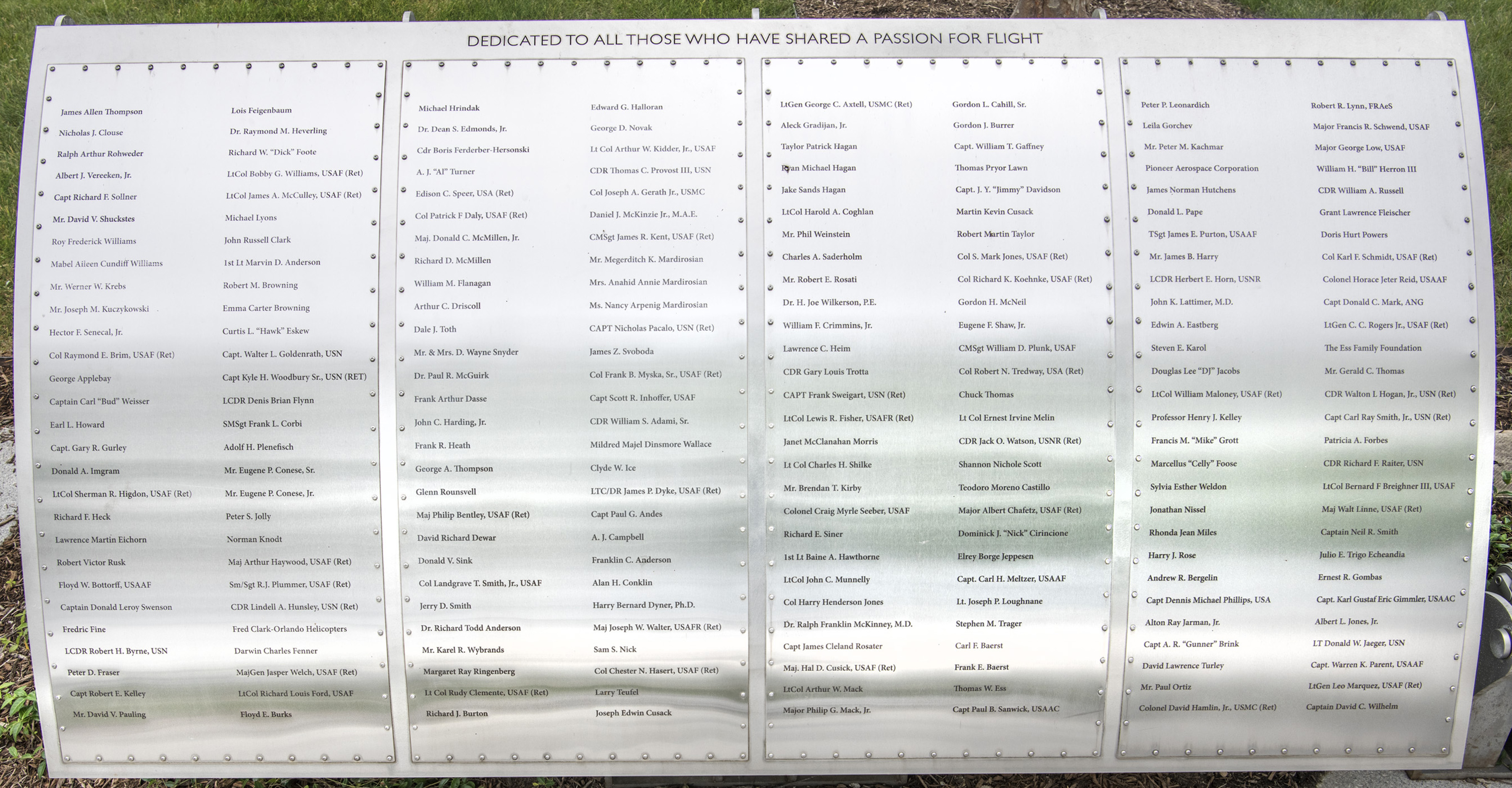
Foil: 27 Panel: 4 Column: 2 Line: 23
Wall of Honor Level: Air and Space Sponsor
Honored by:
Mr. Franz Gimmler
Karl Gustaf Eric Gimmler was born March 27th, 1906 in Milwaukee, Wisconsin, the son of Gustaf and Martha Gimmler. After completing Grace Lutheran School and West Division High School in Milwaukee, he was appointed to the United States Military Academy at West Point from the Fifth Wisconsin District, sponsored by Congressman Victor L. Berger.
He began his cadet career in June 1924. At West Point, in addition to his academic studies, Karl was on the Corps swimming, track, and pentathlon teams and he sang second bass in the choir all four years. He graduated in the top fourth of his class.
Upon graduation, he was assigned to the Air Corps Training Center in San Antonio, Texas where he earned his Pilot Wings, thus realizing his long-held ambition to be commissioned in the Army Air Corps. He immediately married his childhood sweetheart Elisabeth Allis Ehrler of Milwaukee, and joined his first tactical command, in the Third Attack Group at Fort Crockett, Texas. After two years at Crockett, he was ordered to the Air Corps Technical School at Chanute Field, Illinois. After graduation there, he was assigned to the First Pursuit Group, Selfridge Field, Michigan. While there, Karl became a member of the Caterpillar Club having bailed out of a crippled plane and parachuted to safety.
In 1935, First Lieutenant Gimmler achieved national prominence by winning the Billy Mitchell Trophy Race, regarded as the speed classic of the Army Air Corps, in which he averaged 212.9 miles per hour. The Race was established by General Mitchell in 1922 in honor of his younger brother, Lt. Col. Ralph Royce, killed in France in World War I. 1935 was the only year in which General Mitchell presented the Trophy in person (see photo above).
In an interesting letter to Lt. Gimmler acknowledging his victory, General Mitchell wrote,
"I was especially interested in the race and in the whole day's program, which was wonderfully carried out. I was impressed by the personnel and by some features of the flying, but the equipment is just too bad.
"Interceptor pursuit airplanes today should have a speed of around 400 miles per hour. Of course, this can be obtained by 3500 horsepower engines. Their ceiling should be over 40,000 feet. For defensive pursuit, climb and maneuverability or all around fire should be three or four times what we have now. The Europeans have ships of this kind either on hand or about to be turned out. Naturally, they keep everything of that kind secret.
"Congratulating you and the officers of Self ridge Field again, I remain, yours Sincerely, Wm. Mitchell." [From a letter dated October 25,1935 to Lt. Karl G. E. Gimmler, Selfridge Field, Mt Clemens, Michigan, from William Mitchell, "Boxwood", Middleburg, Virginia.]
One year later, February 26, 1936, at the age of 29, Karl, who by now was a Captain, was killed at Barksdale Field, Shreveport, Louisiana. He was the leader of a group of pilots who had been brought down to Barksdale for aerial gunnery practice on ground targets because at that time this field was the only one with concrete runways. The small pursuit aircraft he was flying spun to the ground from 600 feet when he attempted a turn toward the targets at stalling speed while simultaneously engaging himself in the cockpit with his guns. [Note: The pursuit aircraft being flown by Lt. Gimmler was a Boeing P-28 "Peashooter." An identical P-28, originally from Selfridge Field, is on display at the National Air and Space Museum's Udvar-Hazy Center.]
As was stated in his obituary at the time of his death,
"This tragic accident deprived the Air Corps and the Army of a fine officer who was destined to reach great heights in his profession.
"Captain Gimmler's insatiable thirst for exploring the theoretical angles of all scientific fields was the driving force of his life. A camera, gun, automobile, piano, or any other commonplace object to most of us was a delightful laboratory to him. He loved to tear them apart, analyze the theories on which the integral parts were built, and perhaps to offer some constructive criticism for their improvement. At the time of his death he was collecting data on a Leica camera in which the company was very interested and at the same time was writing a treatise on airplane gunnery, advancing some new theories which he had developed.
"A profound thinker, he detested superficiality. His studies were deep and exhaustive and once into a problem he stuck with it until all its possibilities were completely probed. No slave to the clock was he -- to him the time of day meant nothing. Throughout his career he never was able to adjust himself to a schedule of calls or bells, and always harbored an intense aversion for clocks because of their relentless interruptions to his train of thought. His courage, endurance, and ability to think logically, constructively, and without prejudice were characteristics which unquestionably would have brought him, in time, to the top." [From an obituary written by LtGen Emmett E. "Rosie" O'Donnell, Jr at the time of Lt Gimmler's death.]
Captain Gimmler was survived by his widow, Elisabeth (deceased December, 2004) and three children: Katherine Simenson, Elsbeth Russell and Franz Gimmler. General Mitchell himself had died shortly before Captain Gimmler and was buried one week before the latter, both in Forest Home Cemetery, Milwaukee, Wisconsin
Wall of Honor profiles are provided by the honoree or the donor who added their name to the Wall of Honor. The Museum cannot validate all facts contained in the profiles.
Foil: 27
